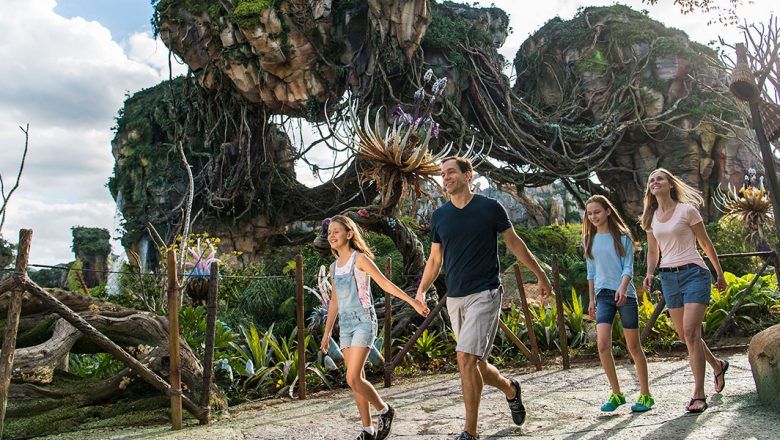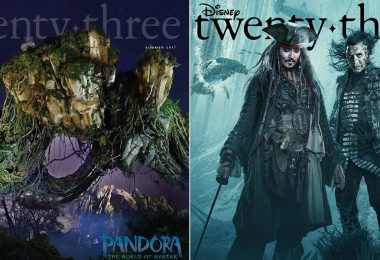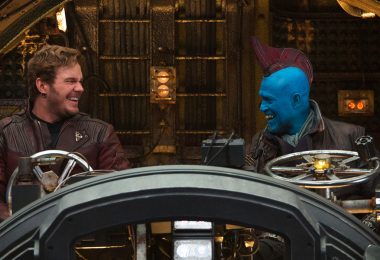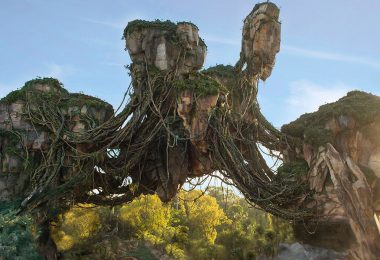By Beth Deitchman
There’s a moss-green-colored door, a little left of center on a temporary wall inside Disney’s Animal Kingdom park, that stands just outside Tiffins, the fine-dining establishment inspired by world travel. “Prepare for Pandora” reads one of the wall’s panels, and after going behind the wall for a visit that Avatar producer Jon Landau describes as a “sneak, sneak, sneak peek,” guests should prepare to be amazed by this new 12-acre land, opening on May 27 inside the park at the Walt Disney World Resort.
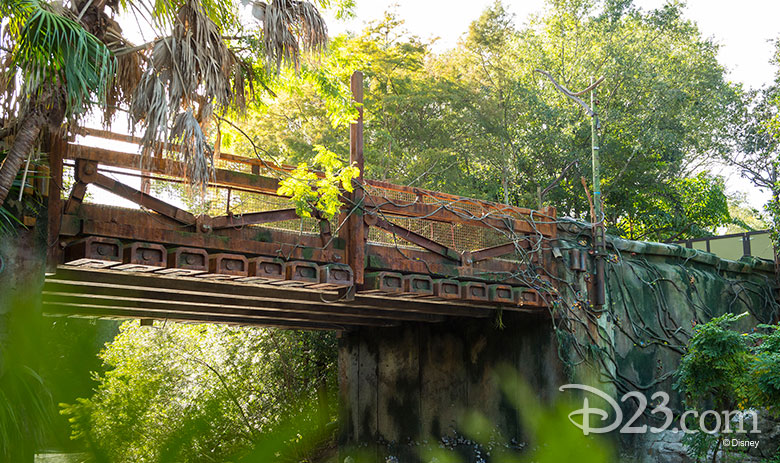
D23 was invited to be among the first to visit Pandora – The World of Avatar, to cross the bridge that connects this new world to the rest of the park. The bridge has a patina that’s weathered and worn, but green lichens are in abundance along its rails. This is the first time we notice that there is life and regeneration all around us in Pandora, but it most definitely isn’t the last.
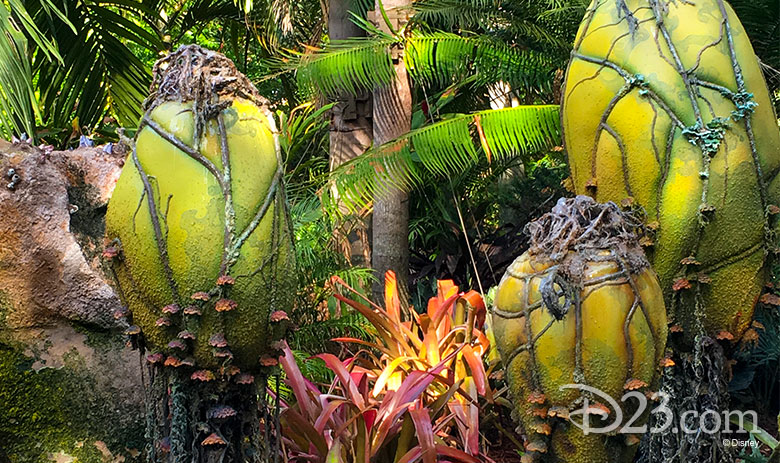
This is an important part of the Pandora narrative, Stefan Hellwig, executive creative director, Walt Disney Imagineering, explains. The land has been set a full generation after the events that took place in Avatar—and after any movie that James Cameron will make in the future, he stresses. The conflicts between the Na’vi and the RDA, the ill-intentioned mining company in the film, have ended. “The Na’vi and humans are at peace, and the Na’vi have welcomed us as visitors to Pandora,” Hellwig explains, before describing the three groups that now call Pandora their home.
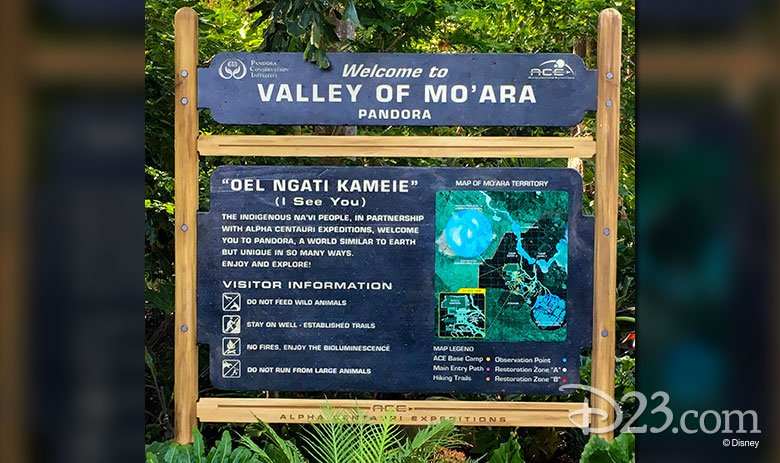
Of course, the indigenous Na’vi are a strong presence on Pandora, but there are newcomers with whom guests will interact more frequently. All visits to Pandora are facilitated by ACE—Alpha Centauri Expeditions—sort of an intergalactic travel company that maintains the infrastructure on Pandora, along with details like the ride queues and trash cans. Then there are the ex-pats—these are folks who fell in love with Pandora and decided to stay when the conflicts with RDA were over. They’ve made a life for themselves here, owning and running the Pongu Pongu tiki bar, or merchandise locations, like Colors of Mo’ara. Cast members on Pandora have embraced this back story, and are happy to share details about the land and their own personal Pandoran history.
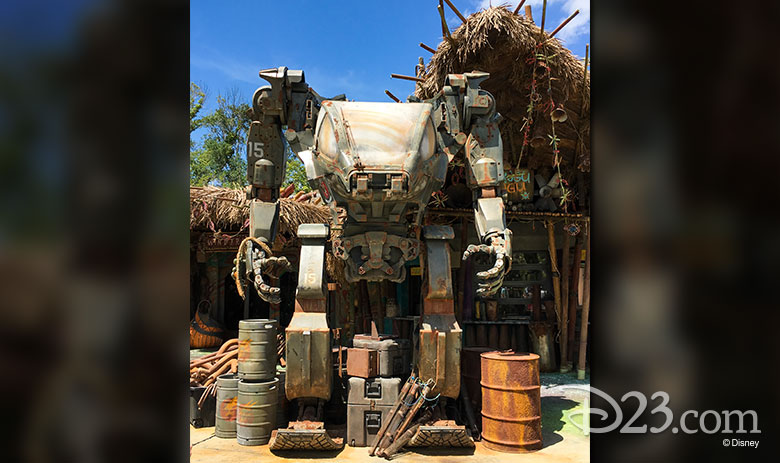
When we talk to Jon Landau about how cast members have been integrated “in story,” he stresses that he wants each to come up with his or her own back story. “If you’re working here, you made a choice to be on Pandora,” he says, and he wants each cast member to decide, “Why did you make that choice? And how do you communicate that to our guests who come through the land?”
Because Pandora exists at Disney’s Animal Kingdom, it is intended to be as real a place as Harambe in Africa, Mark LaVine, executive story development, Walt Disney Imagineering, explained. One need not have seen the movie Avatar to appreciate Pandora. “It’s not about these characters in the movie—it’s about YOU going to that world,” LaVine says.
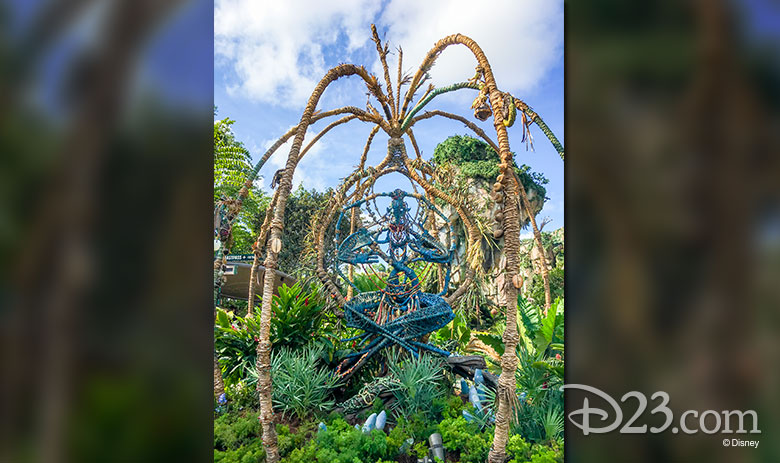
The Imagineers have gone to great lengths to make it clear which structures in Pandora have been created by the Na’vi, and which buildings or facilities were established by the RDA. For example, the structure that houses the Na’vi River Journey attraction is naturally built, with local leaves, bamboo, and similar materials. On the other hand, the sacred caves that are found at the beginning of Flight of Passage abruptly give way to an RDA facility, which the RDA built by callously boring a hole into the existing rock. Hellwig wants guests to notice “that juxtaposition, that big story of the damage that humans can make to natural environments, and of course, the reparation of that now that the conflicts are over.” As you walk through this part of the queue on your way to explore Pandora on the back of a banshee, you’ll notice weathered signs that prominently feature words like “toxicity.” “It’s clearly saying that the RDA was not very sympathetic to the environment,” Hellwig notes.
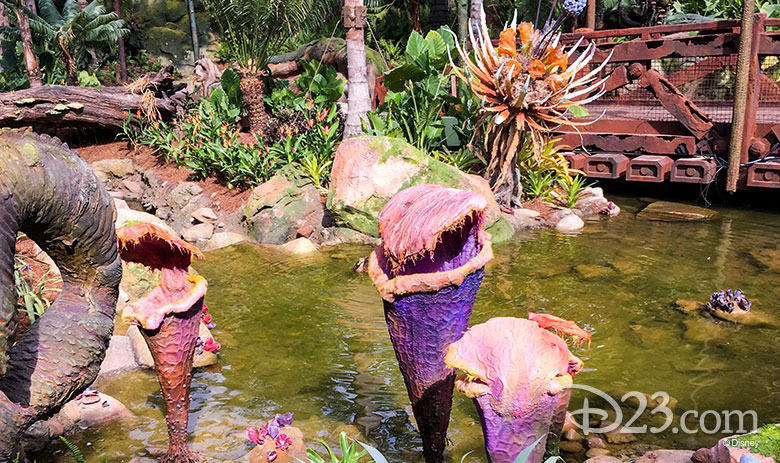
But with the RDA out of the picture, the humans who have stayed behind on Pandora have embraced the value of the land, and peacefully live alongside the Na’vi. Flight of Passage is made possible through the work of the Pandora Conservation Initiative PCI, which has set up shop in the giant RDA facility in order to study the banshee, as well as the long-term effects of the damage done by the RDA. “By studying the banshee, that’s how they get to understand how the environment is doing,” LaVine explains. Through experiments on display in the lab, the PCI is working on cleaning the water, looking for invasive species, and promoting reintroduction programs of animals.
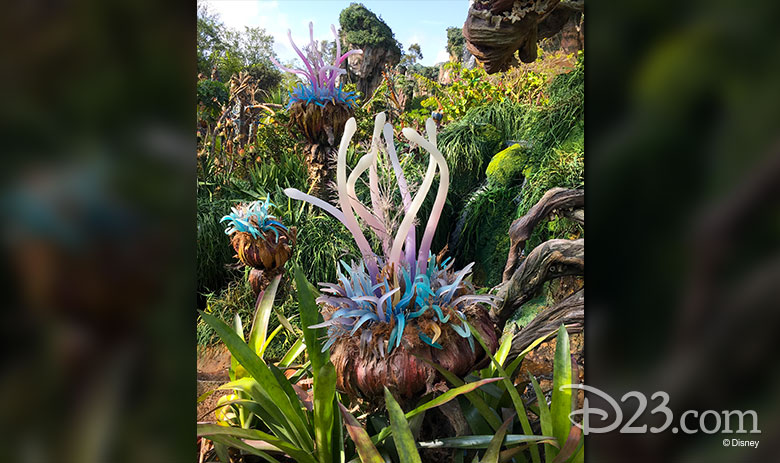
Regeneration and regrowth are important themes that can be seen again and again at Pandora, from the small, young plants that are sprouting alongside their giant, fully grown counterparts, to an oddly shaped mass of green, that on further inspection, proves to be a downed RDA chopper that is now covered with moss, well on its way to being reclaimed by the land.
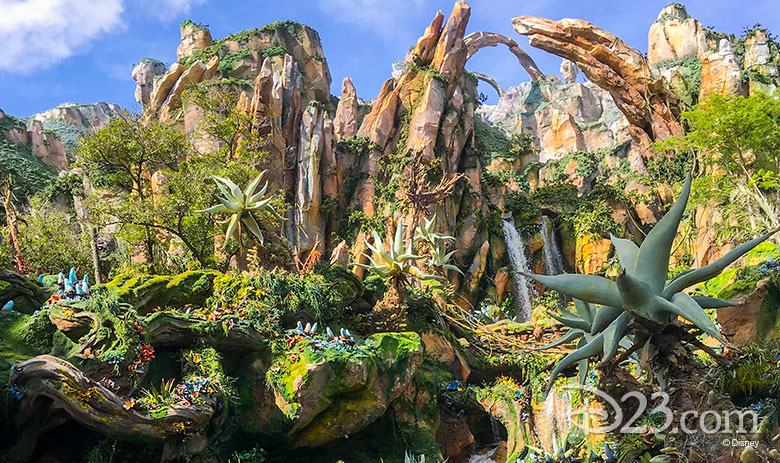
Disney’s Animal Kingdom has a long tradition of celebrating nature, transformation through adventure, and a personal call to action—and all of these themes are in full force throughout the new land. Landau shared that he and the Imagineers looked at the land itself as an attraction that would engage people. “This land is about exploration and discovery,” he said, adding, “To have exploration without the payoff of discovery is not worth it.”
There is something to discover at every turn in Pandora – The World of Avatar. In part 2 we looked at the amazing details in the flora, the fauna and the bioluminescent forest, and part 3 took you further into Pandora’s two thrilling attractions, in part 4 we delve into delectable food and collectable merchandise, and hear more from the creative team responsible for this amazing new land in the summer issue of Disney twenty-three.


